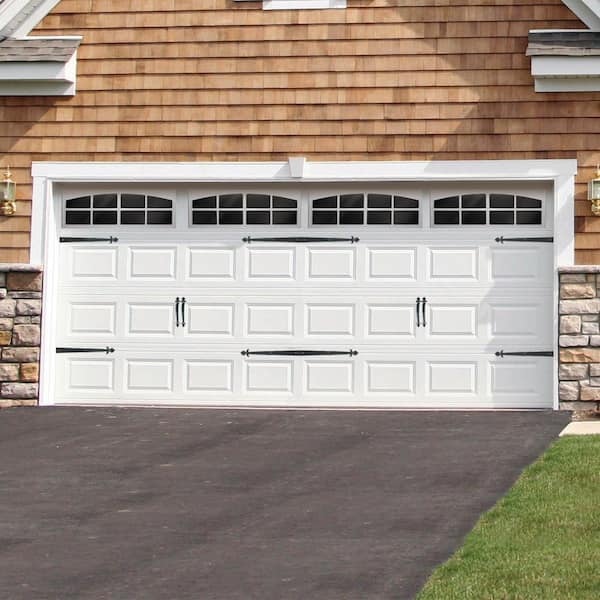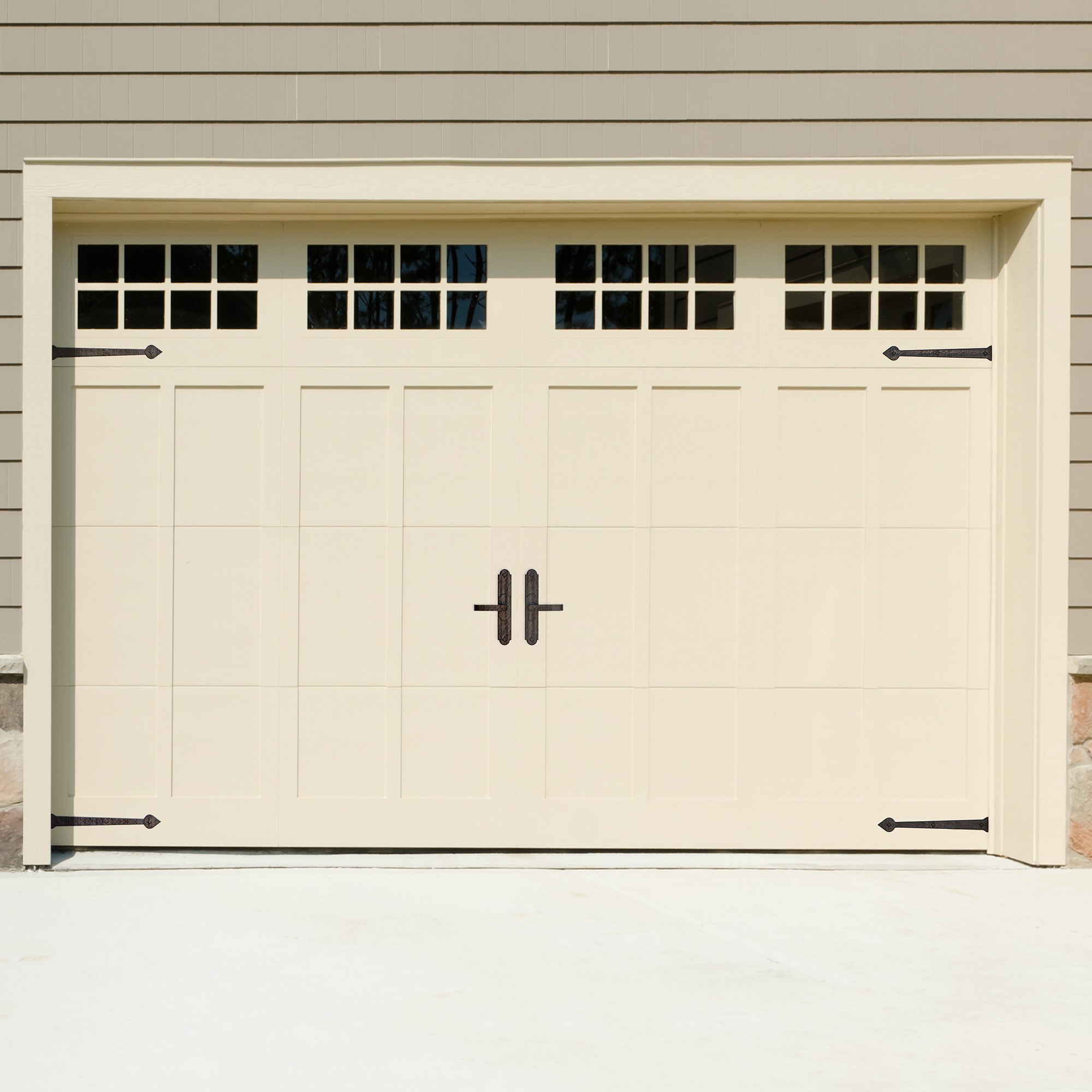Introduction to Decorative Garage Door Hardware
Garage doors aren’t just functional; they can also be a focal point of your home’s exterior. Adding decorative garage door hardware is an excellent way to enhance your curb appeal while giving your home a personal touch. In this guide, we’ll explore various styles, materials, installation tips, and more, based on my experiences and insights gathered over the years.
Why You Should Consider Decorative Garage Door Hardware
Decorative hardware can transform a plain garage door into an attractive feature of your home. Here are a few compelling reasons why you should consider adding decorative elements:
- Enhanced Curb Appeal: Aesthetic appeal can greatly increase the overall appearance of your home.
- Increased Property Value: Well-chosen upgrades can significantly boost your home’s market value.
- Personalization: Express your style and personality through unique designs.
- Cost-Effective Update: Compared to full garage door replacements, decorative hardware offers a cost-effective way to upgrade your door’s look.
Types of Decorative Garage Door Hardware
Understanding the various types of decorative hardware available can help you make informed choices. Here are some popular options:
1. Garage Door Handles
These are functional and elegant accessories that add a vintage or rustic look to your garage door.

2. Hinges
Decorative hinges can complement your garage door style, with designs ranging from traditional to contemporary.
3. Address Plaques
Adding an address plaque near your garage door not only enhances the look but also provides practicality.
4. Window Grilles
Window grilles can add depth and visual interest to garage doors, especially those with windows.
5. Straps and Brackets
These can be affixed to the door to emulate a rustic barn door style, enhancing the overall aesthetic.

Materials Used in Decorative Garage Door Hardware
The type of material you choose can impact both the look and durability of your hardware. Here are some common materials:
1. Wrought Iron
Known for its strength and traditional look, wrought iron offers a timeless elegance that is hard to beat.

2. Stainless Steel
For a modern touch, stainless steel is corrosion-resistant and provides a sleek appearance.
3. Aluminum
Lightweight yet durable, aluminum can be easily molded into various decorative shapes.

4. Wood
For a rustic vibe, wooden hardware can add charm, though it requires more maintenance.
5. Plastic
Budget-friendly and available in various styles, plastic hardware is lightweight but may not offer the same durability as metal options.

How to Choose the Right Decorative Garage Door Hardware
Choosing the right hardware can feel overwhelming, but here are some tips to help narrow down your options:
1. Consider Your Home’s Style
Your garage door hardware should complement the overall architectural style of your home. For instance, a modern home pairs well with sleek stainless steel, while a Tudor-style home looks great with wrought iron.

2. Match the Color and Finish
Ensure the color and finish of your hardware match or complement your garage door and other exterior elements of your home.
3. Think About Functionality
Choose decorative hardware that also serves a functional purpose, such as handles that are easy to grip and hinges that are durable.
4. Evaluate Your Budget
Determine how much you’re willing to spend. In many cases, a modest budget can still yield beautiful results with decorative hardware.
Installation Tips for Decorative Garage Door Hardware
The installation of decorative hardware can often be a DIY project. Here are some tips based on my personal experience:
1. Gather Your Tools
You’ll need a drill, level, measuring tape, screwdriver, and possibly anchors for heavier items.
2. Measure Carefully
Take accurate measurements to ensure the hardware is evenly placed and aesthetically pleasing.
3. Pre-drill Holes
To prevent wood from splitting, pre-drill holes before screwing in hardware.
4. Use a Level
Ensure everything is aligned properly by using a level during installation.
5. Follow Manufacturer Instructions
Always refer to the manufacturer’s instructions for specific installation guidelines.
Comparing Decorative Garage Door Hardware Options
Here’s a quick comparison table to help you weigh your options:
| Hardware Type | Material | Style | Durability | Price Range |
|---|---|---|---|---|
| Handles | Wrought Iron | Vintage | High | $$$ |
| Hinges | Stainless Steel | Modern | Very High | $$$ |
| Address Plaques | Aluminum | Classic | Medium | $$ |
| Window Grilles | Plastic | Contemporary | Low | $ |
| Straps | Wrought Iron | Rustic | High | $$$ |
Pros and Cons of Decorative Garage Door Hardware
Like any home improvement project, adding decorative hardware comes with its advantages and disadvantages:
Pros
- Enhances aesthetic appeal
- Increases property value
- Wide variety of styles and materials
- Cost-effective upgrade
- Personalized touch to your home
Cons
- May require maintenance depending on the material
- Installation can be tricky for complex designs
- Some materials can be expensive
FAQs about Decorative Garage Door Hardware
1. What is the best material for decorative garage door hardware?
The best material depends on your style preference and durability needs. Wrought iron offers a classic look, while stainless steel is sleek and modern.
2. How can I install decorative garage door hardware myself?
With tools like a drill and level, you can easily install hardware by following the manufacturer’s instructions and taking precise measurements.
3. Can decorative garage door hardware withstand harsh weather conditions?
Yes, but it’s essential to choose high-quality materials—such as stainless steel or wrought iron—for durability against weather elements.
4. How much does decorative garage door hardware cost?
Costs can vary widely depending on the material, style, and brand, ranging from $30 for basic options to over $200 for high-end pieces.
5. Will adding decorative hardware increase my home’s value?
Yes, often aesthetic upgrades like decorative hardware can enhance curb appeal and increase your home’s market value.